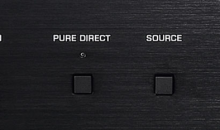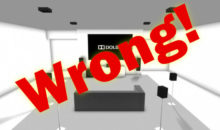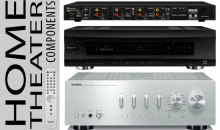How Dolby Atmos Theaters Changed Surround Sound
We wrote an article earlier titled What is Dolby Atmos. That dealt primarily with how the new surround sound format is infiltrating home theater. After that, we were approached with questions about the differences between Dolby Atmos for the home theater environment and Dolby Atmos theaters for feature films. As it turns out, the differences are vast, but the format remains amazingly scalable. That means that you have an excellent result in home theater using the object-oriented soundtracks mixed for theatrical playback.
Dolby Atmos in Movie Theaters – The Hardware
One of the strengths of Doly Atmos is its flexibility and scalability. The goal of any mix is to accurately portray the action occurring on the screen and also to immerse the audience in the on-screen action. Some control was afforded in the past with joystick-based faders that routed audio to any of the Surround or Surround Back channels. This style of mixing was (and remains) effective but lacked the crucial overhead channels and fluidity solved by the new Dolby Atmos surround format.
Dolby Atmos accomplishes all of this by using what it refers to as “Audio Objects”. These objects are composed of single sounds or groups of sounds which can be static or in motion around the soundstage. These Audio Objects are accompanied by digital “meta” data that give information as to their location and movement over time. It is because of this meta data that a movie theater with 16 speakers can reproduce the same soundtrack as one with 64 speakers. The system routes the sound to the available speakers rather than “channels”. What’s great about “objects” is that editors and mix engineers (rerecording engineers) are used to working with audio objects and can easily relate to the new format based on how most digital audio workstations already function.
To allow mixes to have some flexibility in terms of grouping sound, Dolby Atmos also allows for “beds” or groups of sound objects that can be assigned to a particular array of speakers. This makes for a great way to group ambient sounds and it also benefits from flexible environments where a surround array can range from 4 speakers to 8 or more. For downmixing, these “beds” are also what allow easy upconversion of a theater mix to a 5.1, 7.1, or even 9.1 system with overhead channels.
Dolby Atmos Software
The final mix in a Dolby Atmos system is a combination of ambient “beds” and audio objects. Because Dolby Atmos also takes into account the power and frequency response of all speakers in the system, additional gains in efficiency can be realized. An example of this is the addition of rear subwoofers, which allow for full frequency range reproduction, but with smaller-sized surrounds. Dolby Atmos theaters also tend to place side surrounds closer to the screen, which allows for a smoother transition to the rear surrounds during front-to-back events.
Putting it All Together
Playback in multiple theaters is possible with Dolby Atmos due to a sophisticated method of downconverting to acceptable and compatible formats. A digital cinema package (DCP) with a Dolby Atmos soundtrack (saved as a file) is the premier track, but Dolby Surround 7.1 is also available as a fallback. In fact, the Dolby Atmos cinema processor can switch back and forth between them if it becomes necessary (the file is corrupted, for example). This isn’t new. Back in the day of Dolby Digital, film systems were able to fall back to Dolby SR (Dolby Surround) analogue tracks on 35 mm prints.
Dolby Atmos in the Theater
To play back Dolby Atmos in the cinema environment, theater owners need a compatible Dolby Atmos processor. Right now, that’s the Dolby Atmos Cinema Processor CP850. This processor features automatic equalization for all speakers via a 1/12‐octave EQ that is an enhanced carryover from the Dolby Lake processor. The CP850 can handle up to 64 channels and connects via 8 balanced XLR (AES) connections plus an Ethernet cable for streaming the Dolby Atmos audio data.
With respect to the actual auditorium, flexibility is one of the most impressive aspects of Dolby Atmos. Prior to the introduction of Dolby Atmos, speaker layouts were extremely limited, and custom delays were used to account for longer and shorter rooms. Dolby Atmos theaters utilize recommended speaker layouts for sure, but the flexibility in design is guided by the processor, which measures the position of each speaker and calibrates itself accordingly.
The “ideal” number of loudspeakers varies with the room, but the first-generation Dolby Atmos Cinema Processor CP850 system is fully capable of handling up to 64 outputs. That’s a lot of channels, but the flexibility has more to do with providing options for larger theaters and the use of separate amplification for each speaker if desired.
Dolby Atmos Resources
Since we’re recommending checking out Dolby Atmos theaters when you can, we figured we better point you to the resources to help you find one. Below is a link to locate a Dolby Atmos theater near you and another to check out what movies are available in the new Dolby Atmos format.
- Dolby Atmos Theater Locator
Click the link above to go to Dolby Laboratories’ search engine and locate a Dolby Atmos-equipped movie theater near you. If you’ve never experienced Atmos, you’ll want to check it out.
- Dolby Atmos Movies
If you’re wondering exactly which movies will feature the newest Dolby Atmos surround format (in the theaters), hit this link and see who’s jumping on board with up to 32 channels of immersive surround. The list will give you access to existing Dolby Atmos movies from 2014 and earlier as well as a sneak peek into 2015 titles (and beyond).







